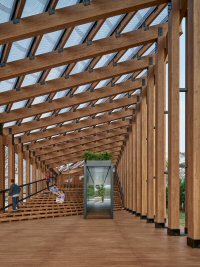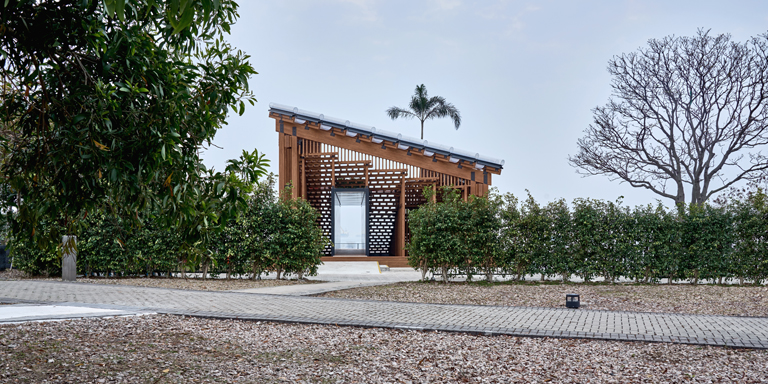
This year looks set to be a momentous one for the West Kowloon Cultural District (WKCD), with the Xiqu Performing Arts Centre making its debut this January and a new pavilion unveiled this month by local architects New Office Works after the practice won the inaugural West Kowloon Cultural District Authority (WKCDA) Young Architects & Designers Competition. The timber structure, named Growing Up, features a distinct sloping roof and will provide a space for leisure and relaxation on the waterfront over the next six months. There’s more to come from WKCD by the end of 2019, with the scheduled opening of further areas of the Art Park, which hosts arts and cultural events including the Freespace Happening festival, said Kingsley Jayasekera from the WKCDA’s Marketing and Customer Experience Department.
Tell us about the pavilion design competition – what were you expecting from the competition entries?
While there are many pavilion design projects and competitions around the world that we took inspiration from, we wanted our competition to support young Hong Kong talent at the beginning of their careers. In building the West Kowloon Cultural District we are working with many experienced international and Hong Kong architects on the major buildings but as one of our roles is to nurture creativity, we wanted architects and designers who were less established to have a role in the district. Our expectation was innovation, fresh ideas and a very public-focused design philosophy and the 320 entries we received delivered this in their rich diversity and bold ambition.

Tell us why you singled out New Office Works as the winning entry.
What stood out about the winning entry was its use of wood, its close attention to the location on the waterfront with its sunset views, its usability as an event space and in particular the way the design reflected elements that were particular to Hong Kong. For instance, the level changes, the density of the city, the scaffolding used in construction, the mix of old and new and east and west, and the way nature interacts with buildings are all represented in the design.The WKCD provides 23 hectares of public open space, including a 2km waterfront promenade. How important was it to provide that public space, and tell us about some of the ways in which it is used.
The public space is essential to the district, and allows the public the freedom to linger, interact and engage with other people and the arts and culture. We already hold a variety of events on the site, including our regular Freespace Happening festivals that include live music, market stalls and arts and crafts workshops. Traditionally everyday use of public space in Hong Kong has been quite heavily regulated but unlike other parks in Hong Kong we welcome activities like pet walking, ball games, kite flying and picnicking. We also run a successful street performance scheme. The aim is that the activities in our venues should spill into the public spaces and the integration of public space within the buildings should encourage the public to cross the boundary and experience what the venues and museums have to offer.What is distinct about the approach to public spaces in Hong Kong compared with other cities?
Due to its compact urban environment, public space is often small and has a large number of hard surfaces, which makes management easier but spaces less attractive. Generally, lawns are hard to find and are not accessible for the public and many activities are forbidden. You will open up further parts of the Art Park this year, including Freespace. Tell us about that.
The Art Park is an 11-hectare green space to host arts and cultural events. It features a raised deck that slopes down to a lawn on its reverse side, faces out to the harbour to the front and sits above a row of restaurants and seats. Along the waterfront promenade instead of the usual railing we have created a low wall/seat, which opens up the view of the skyline. Eventually this promenade will extend for 2.5km and offer the best views in Hong Kong. The lawn spaces, the largest of which can accommodate 10,000 people, are all designed so they can host events with pre-fixed power and data points. Running through the Art Park is the Cultural Boulevard, which has a small art pavilion, and Freespace, a new centre for contemporary performance that is set to open next month. It comprises The Box, the largest black box theatre in Hong Kong, live music bar/café The Livehouse and two multi-purpose spaces for artistic exchange and collaboration, The Room and The Studio. The Art Park will link with future facilities like the M+ museum, which opens in 2020 and will feature a large public terrace, and the Hong Kong Palace Museum, which will debut in 2022.
Related link
West Kowloon Cultural District (WKCD)


